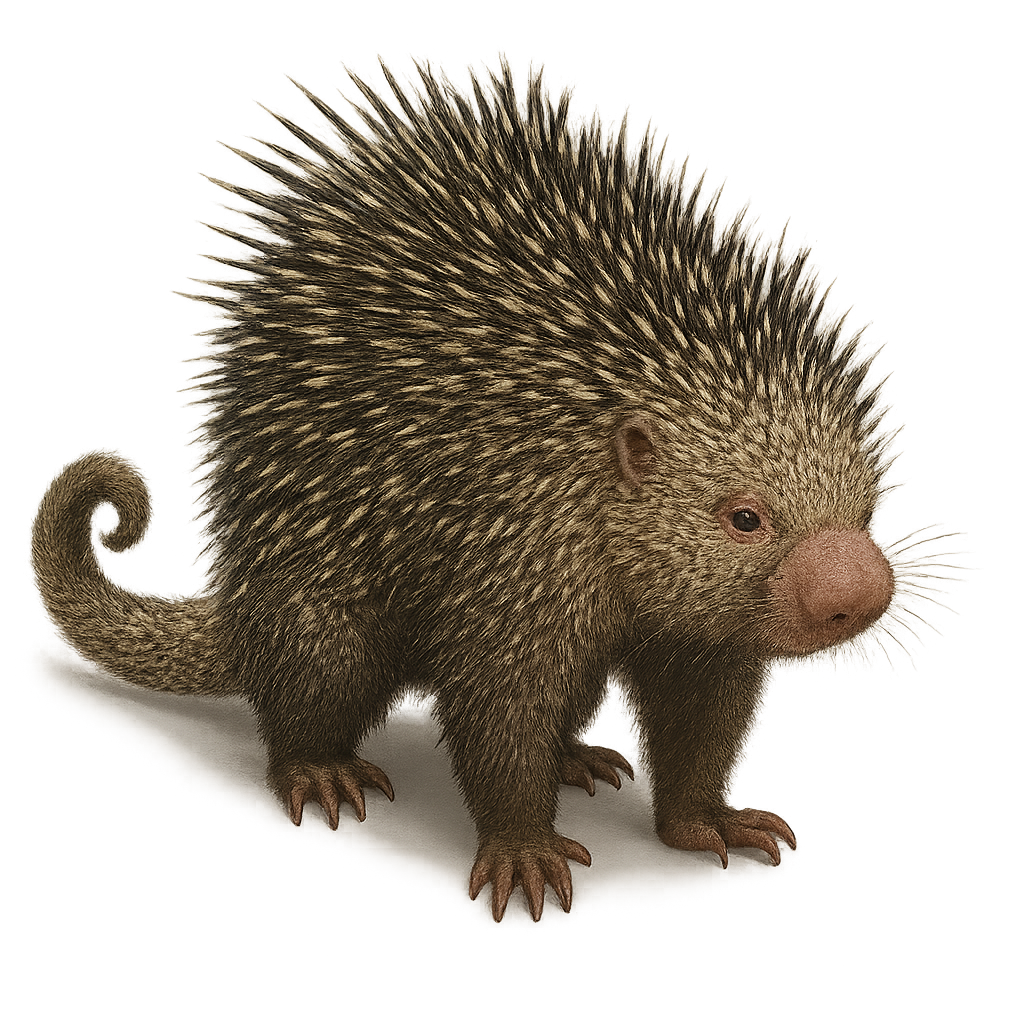Your wildlife photography guide.
Explore the prehensile-tailed porcupine in detail, study its behavior, prepare your shots.
Where to observe and photograph the prehensile-tailed porcupine in the wild
Learn where and when to spot the prehensile-tailed porcupine in the wild, how to identify the species based on distinctive features, and what natural environments it inhabits. The WildlifePhotographer app offers tailored photography tips that reflect the prehensile-tailed porcupine’s behavior, helping you capture better wildlife images. Explore the full species profile for key information including description, habitat, active periods, and approach techniques.
Prehensile-tailed porcupine
Scientific name: Coendou prehensilis

IUCN Status: Least Concern
Family: ERETHIZONTIDAE
Group: Mammals
Sensitivity to human approach: Suspicious
Minimum approach distance: 5 m
Rut period: March to May
Gestation: 203-210 jours
Births: September to November
Habitat:
tropical forests, subtropical forests, wooded areas
Activity period :
Mainly active at night, generally discreet during the day.
Identification and description:
The Coendou prehensilis, or prehensile-tailed porcupine, is an arboreal rodent native to the tropical forests of South America. It is distinguished by its prehensile tail, which allows it to grasp branches, and its quills that protect it from predators. This porcupine measures about 30 to 60 cm in length, not including its tail which can reach 45 cm. Its fur is typically brown or gray, interspersed with white or yellow quills. Nocturnal, it primarily feeds on fruits, leaves, and bark. Although solitary, it can sometimes be seen in small groups. Its ability to move easily through trees makes it an essential inhabitant of its ecosystem.
Recommended lens:
400 mm – adjust based on distance, desired framing (portrait or habitat), and approach conditions.
Photography tips:
To photograph the Coendou prehensilis, it is advisable to use a telephoto lens of at least 400mm to capture detailed images from a distance without disturbing the animal. Being nocturnal, it is best to photograph it at dusk or dawn when the light is soft. Use a tripod to stabilize your camera and avoid motion blur. Be patient and discreet, as this animal is suspicious and can easily hide in the trees.
The WildlifePhotographer App is coming soon!
Be the first to explore the best nature spots, track rutting seasons, log your observations, and observe more wildlife.
Already 1 449 wildlife lovers subscribed worldwide

